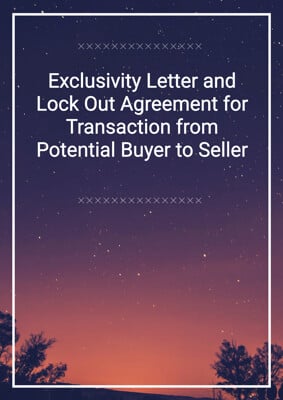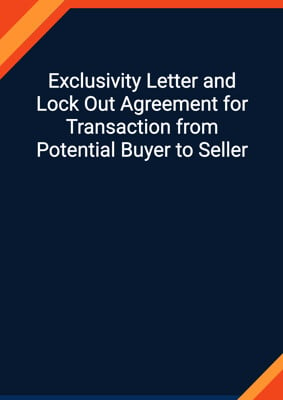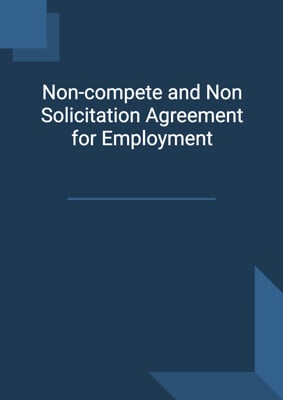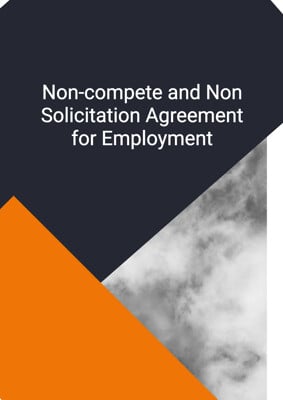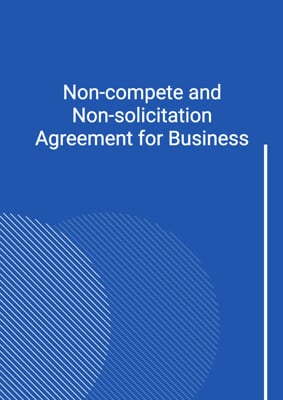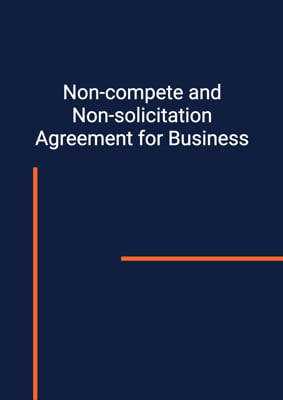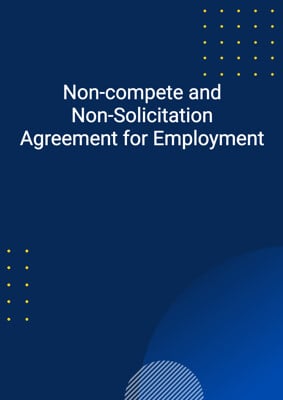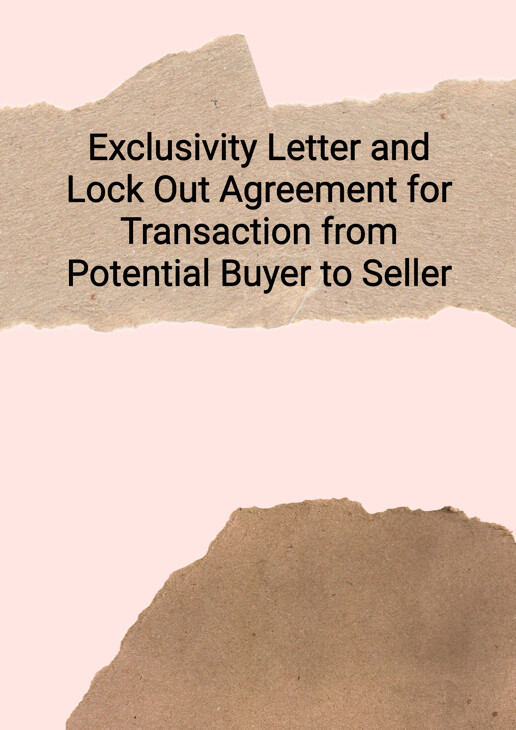
Exclusivity Letter and Lock Out Agreement for Transaction from Potential Buyer to Seller
Neutral
This exclusivity letter / lock up agreement is drafted from the perspective of a potential buyer / prospective purchaser in the context of a share or asset acquisition from a seller / vendor. This is drafted in neutral form.
How to Tailor the Document for Your Need?
01
Create Document
Fill in the details of the parties. You can click the "Fill with Member’s Information" button to complete it with information saved to your account.
02
Fill Information
Please fill in any additional information by following the step-by-step guide on the left hand side of the preview document and click the "Next" button.
03
Get Document
When you are done, click the "Get Document" button and you can download the document in Word or PDF format.
04
Review Document
Please get all parties to review the document carefully and make any final modifications to ensure that the details are correct before signing the document.
Document Preview
Document Description
The document titled 'Exclusivity Letter and Lock Out Agreement for Transaction from Potential Buyer to Seller' is a crucial document in the context of a potential transaction between a potential buyer and a seller. It serves to establish an exclusivity agreement between the parties, ensuring that the seller refrains from engaging with any other potential buyers or parties during the specified period of exclusivity. The document consists of several sections, each addressing specific aspects of the agreement.
The document begins with an introductory section that includes the title, account job company, account job address, party 1 name, party 1 address, and the date. It is marked as strictly private and confidential, setting the tone for the confidential nature of the agreement.
The first section of the document provides a detailed explanation of the purpose and scope of the agreement. It highlights the potential acquisition of either the entire issued share capital of a company or the business and assets of a company, depending on the specific circumstances. It emphasizes the need for the seller to enter into an exclusivity agreement before further expenditure is incurred in due diligence or evaluation of the potential transaction.
The second section outlines the obligations of the seller during the exclusivity period. It explicitly prohibits the seller, the company, and its subsidiary undertakings from engaging in certain activities, such as selling or transferring any interest in the shares or business, soliciting proposals from other parties, or entering into discussions or negotiations with anyone other than the potential buyer. The seller is also required to provide the potential buyer with access to relevant information and notify them of any offers or communications received.
The third section contains warranties and representations made by the seller. It confirms that all negotiations and communications with other parties regarding the potential transaction have been discontinued. It also states that no arrangements or agreements have been made with any party, conditional or otherwise, relating to the acquisition of the company or its assets and undertakings.
The fourth section addresses the seller's obligations to pay the potential buyer's costs and expenses incurred in relation to the potential transaction. The amount to be paid is either all costs and expenses or up to a specified maximum, depending on the terms agreed upon.
The fifth section includes a provision that relieves the seller of any payment obligations if the potential buyer indicates an inability or unwillingness to conclude the purchase on the terms initially offered. This provision protects the seller's interests in case of unfavorable amendments or a lower price offered by the potential buyer.
The document concludes with sections on the exercise of rights and remedies, the validity and enforceability of provisions, jurisdiction, and the absence of rights for non-parties. It also includes spaces for signatures and confirmation of agreement.
Overall, this document plays a crucial role in establishing an exclusive relationship between the potential buyer and the seller, ensuring confidentiality and commitment to the potential transaction.
How to use this document?
Guidance for using the 'Exclusivity Letter and Lock Out Agreement for Transaction from Potential Buyer to Seller':
1. Provide information: Fill in the relevant details in the document, including the account job company, account job address, party 1 name, party 1 address, and the current date. Ensure accuracy and completeness.
2. Understand the purpose: Familiarize yourself with the purpose of the document, which is to establish an exclusivity agreement between the potential buyer and the seller. This agreement ensures that the seller refrains from engaging with other potential buyers or parties during the specified exclusivity period.
3. Determine the type of transaction: Identify whether the potential transaction involves the acquisition of the entire issued share capital of a company or the business and assets of a company. This will determine the specific provisions applicable to the transaction.
4. Explain the agreement to the seller: Clearly communicate the terms and obligations outlined in the document to the seller. Emphasize the importance of adhering to the exclusivity agreement and the consequences of non-compliance.
5. Obtain signatures: Ensure that both parties sign and return a copy of the letter to indicate their agreement and acceptance of the terms. This will legally bind the parties to the agreement.
6. Maintain confidentiality: Stress the confidential nature of the agreement and the need to keep the contents of the document private and confidential. Remind both parties to handle any sensitive information with utmost care.
7. Comply with obligations: Throughout the exclusivity period, the seller must strictly adhere to the obligations outlined in the agreement. This includes refraining from engaging with other potential buyers or parties and providing the potential buyer with access to relevant information.
8. Monitor the transaction progress: Keep track of the progress of the potential transaction, including any offers or communications received. Notify the potential buyer promptly and provide any requested assistance to facilitate necessary regulatory clearances and approvals.
9. Seek legal advice if needed: If there are any uncertainties or complexities regarding the agreement or the potential transaction, it is advisable to seek legal advice to ensure compliance and protect the interests of both parties.
10. Understand payment obligations: If the seller breaches the agreement, familiarize yourself with the payment obligations outlined in the document. Determine whether all costs and expenses or up to a specified maximum are payable by the seller.
11. Exercise rights and remedies: Be aware of the potential buyer's rights and remedies in case of a material breach by the seller, withdrawal from negotiations, or the sale of shares or business to a third party within 12 months. Promptly notify the potential buyer of any actions taken that would have been prohibited by the agreement.
12. Retain a copy: Keep a copy of the fully executed agreement for future reference and record-keeping purposes.
Please note that this guidance is provided for informational purposes only and does not constitute legal advice. It is recommended to consult with a legal professional to ensure compliance with applicable laws and regulations.
Not the right document?
Don’t worry, we have thousands of documents for you to choose from:



